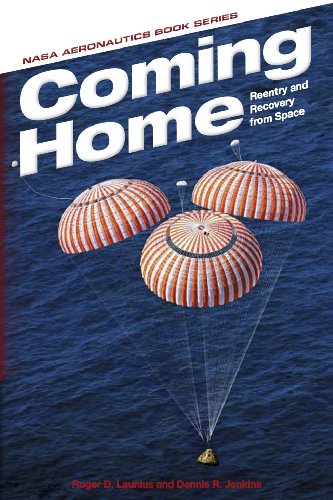
Coming Home: Reentry and Recovery from Space
by Roger D. Launius, Dennis R. Jenkins
Publisher: NASA 2012
ISBN/ASIN: B009LBZ7CA
Number of pages: 397
Description:
Returning to Earth after a flight into space is a fundamental challenge, and contributions from the NASA Aeronautics Research Mission Directorate in aerodynamics, thermal protection, guidance and control, stability, propulsion, and landing systems have proven critical to the success of the human space flight and other space programs. Without this base of fundamental and applied research, the capability to fly into space would not exist.
Download or read it online for free here:
Download link
(multiple formats)
Similar books
 Rockets and People: Volume IV: The Moon Race
Rockets and People: Volume IV: The Moon Raceby Boris Chertok - NASA
In this volume the famous spacecraft designer Boris Chertok, who worked under Sergey Korolev, continues his fascinating narrative on the Soviet space program, this time covering 1968 to 1974, the peak years of the Soviet human lunar program.
(8110 views)
 How to design, build and test small liquid-fuel rocket engines
How to design, build and test small liquid-fuel rocket enginesby Leroy J. Krzycki - Rocketlab
This text provides the amateur builder with design information, fabrication procedures, test equipement requirements, and safe oeprating procedures for small liquid-fuel rocket engines, which are relatively simple devices.
(17549 views)
 The Apollo Spacecraft: A Chronology
The Apollo Spacecraft: A Chronologyby Ivan D. Ertel, at al. - NASA
The chronology of the Apollo spacecraft and the lunar mission provides documented information covering a wide range of happenings directly and indirectly related to the program. Written for historians and others interested in the great adventure.
(16695 views)
 Rockets and People, Volume 1
Rockets and People, Volume 1by Boris Chertok - NASA History Series
Volume 1 of the memoirs of academician Boris Chertok, translated from the original Russian. Describes his early years as an engineer and ends with the mission to Germany after the end of WWII when the Soviets captured Nazi missile technology.
(6553 views)